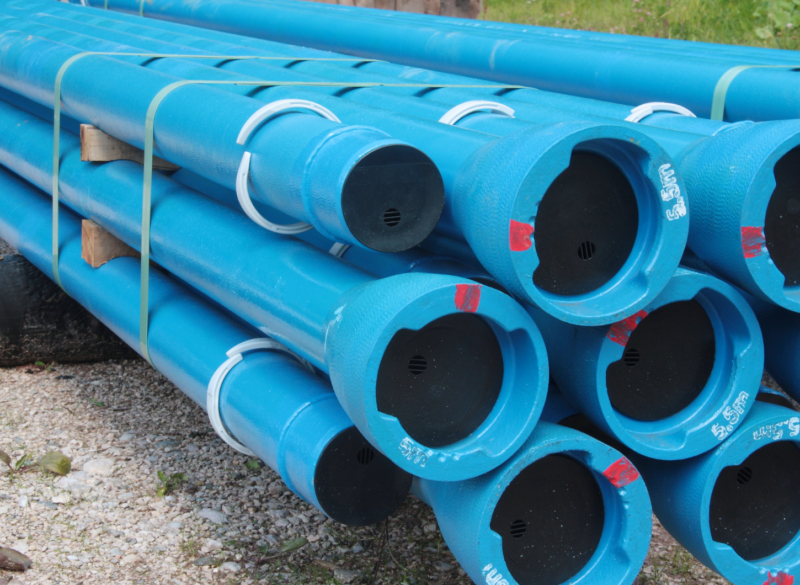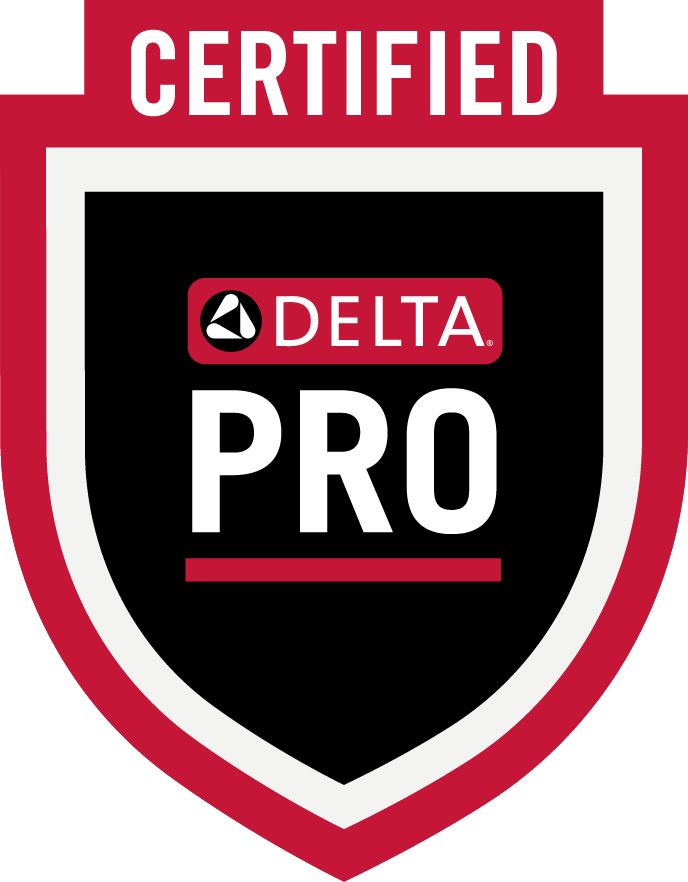
Are you looking for a sewer line repair service in Orange County? We are the sewer line plumber Orange County residents trust to handle all of their sewer repair and installation needs. We offer sewer plumbing services including branch line drain cleaning, P-Trap installation, sewer main line repair, soil stack vent repair, toilet trap repair, and more.
Sewer lines carry wastewater and sewage from homes and businesses to wastewater facilities. They consist of sewer pipes, manholes, and pumping stations and their role is to maintain water quality because it’s necessary for good public health.
The sewage flows through the main trunk line in sanitary sewers. The bottom of each sanitary sewer is covered with a layer of rock or sand so that the sewage does not seep into the earth and contaminate groundwater supplies. The top of each sewer has a trap, which prevents smells from coming back up to residents’ homes when they use their toilets. Odor-causing gases are prevented from seeping into buildings by vent stacks which allow air pressure to be maintained in the sewer system even when wastewater is flowing.
Because there are many health hazards that can be associated with sewer lines, they are designed to be as safe as possible. Even if a line breaks, the layers of rock and sand prevent wastewater from seeping into the ground. The reason why this happens is that wastewater enters one manhole, flows under the ground toward another manhole, and finally, it’s pumped out so that it can flow to a treatment facility for further processing.
After being treated at the plant, water is discharged back into rivers or oceans so that it maintains cleanliness and good public health standards. There are different types of sewage treatment at the plant: primary service, secondary service, and tertiary service.
How long it takes to repair a sewer line depends on several factors, including the location of the pipe and what type of damage has occurred. Sewer lines are often repaired using trenchless techniques, which can reduce repair times dramatically. Sewer pipes may only take a few hours to be fixed or may take up to five days or more for repairs. Many times, sewer lines need to be re-piped in order to fix them properly.
Sewer lines are basically large underground tunnels that transport wastewater from homes and businesses to treatment facilities. Pipes that are smaller than 6 inches in diameter are considered to be “sewer laterals,” while larger ones are referred to as “principal sewers”. Sewer lines generally follow below roads so they do not intersect with other utilities such as gas, electric, and water lines. Sewer lines are usually buried about 5 feet below the ground’s surface. Sewers are not always laid in a straight line, but may follow undulations in the landscape to avoid obstructions underground including tree roots. Sewers are typically located under the driveway or sidewalk of most homes.
The inside of sewer pipes are made up of small ridges that help them remain free of debris by making it easier for liquid waste to flow through them quickly. However, these ridges can wear down over time due to normal wear and tear on sewer lines. This means they become less effective at preventing blockages from occurring within sewer lines themselves. When this happens, you’ll typically notice slow drainage in the bathroom or kitchen sink, backed up
Sewer line repairs are generally done using trenchless technologies because they permit crews to dig much smaller holes than traditional digging methods would require. Trenchless technology also reduces the overall time it takes for a repair crew to get the job done since they won’t have to spend as much time preparing an area for excavation by clearing out trees and brush. If sewer lines are damaged, they’ll be replaced with new ones. Sewer line repairs are typically performed using either cured-in-place pipes (CIPP) or slip lining techniques, which both create a new sewer line for wastewater to flow through without having to dig up the old one first. Sewer pipe repairs usually take anywhere from one day to three days depending on the severity of the damage that has occurred.
Trenchless technology is often used during cured in place pipe (CIPP) sewer repairs because it permits crews to replace sewers faster than traditional methods would permit. CIPP is an effective method for repairing damage caused by roots growing into pipelines and cracking them open. Sewers that have been damaged by roots will be cut out and replaced using a new liner. Sewers can also cracked due to regular wear and tear, which is why CIPP sewer line repairs are commonly recommended in older neighborhoods or places where trees and brush grow close to sewer lines. Sewer lines that require only small repairs may take one day, while larger ones may take up to three days for CIPP sewers to be repaired.
When homeowners have problems with their sewer line, they often don’t think about how much a repair will cost. The average price homeowners pay for sewer line repair is $2,556 according to national averages. If you need a full replacement of your sewer line, you can expect to spend between $1,000 and $5,000. Sewer lines last an average of 25 years before needing to be replaced or re-piped. Homeowners who get a complete PVC sewer replacement can spend up to $50,000 on the job depending on its size.
It’s important to know that costs vary depending on location and other factors. Some cities charge more or less for specific services that include everything from permitting to excavation to replacing the entire pipeline from the street side of your home all the way down to the main sewer line. Sewer lines can also get damaged from tree roots and other obstructions, broken connections, or faulty installation that may require a complete re-pipe instead of just a repair.
If you’re not sure what’s causing damage to your sewer line, it’s important to call in a plumber because different problems come with different solutions and repairs. For example, if you know there is damage but don’t know why your best option would be to replace the entire pipe at once for comprehensive protection against future leaks and other issues. This generally costs around $3,000-$25,000. If you still think you might need only a minor repair such as repairing cracked pipes yourself, expect to pay around $1,073-$4,054 according to national averages.
Sewer line repair is not typically covered by a standard homeowner’s insurance policy; however, many insurance companies will offer additional coverage for sewer repair. Here is some information below…
When it comes to household repairs, many people automatically think of roof damage and broken windows – but they may not give much thought to plumbing. Sewer line leaks and related backups usually aren’t covered by home insurance policies, so adding sewer repair coverage is a smart idea.
Sewer backup happens when sewage from a clog or break in the system backs up into your house through drains or toilets. Sewage can seep into floors, walls, ceilings and even furniture as well as cause foul odors throughout the building. Sewer damage claims typically range from $10,000 to $20,000 on average although if you have older plumbing systems with cast iron pipes capable of corroding over time the costs could be drastically higher.
Additionally, Sewer backups can create health hazards if the waste spills into your house or yard. Sewage is hazardous, and any contaminated water should be cleaned up using protective clothing and disinfectants to prevent illness. Sewer backup coverage typically costs about $150-$500 annually for most homeowners. Here are several options homeowners have available when it comes to Sewer Repair Insurance:
If you want to add sewer backup coverage then look into purchasing an endorsement that adds Sewer Back-Up coverage on top of your existing policy. An endorsement provides specific coverages over and above the standard insurance policies provided by carriers, so they are subject to individual underwriting approval which means you may not approval every time. Most endorsements are offered for an additional premium, so there is already a cost associated with them. Sewer backup coverage can be added to your home policy for between $150-$500 per year depending on the Sewer Back-Up Coverage you want to include.
Alternatively, Sewer Repair Insurance can be purchased as a stand-alone policy that covers the cost of sewer line repairs. When it comes to Sewer Repair Insurance policies there are three types available – Preferred Risk Policies (PRPs), Standard Risk Policies (SRPs) and Special Risk Policies (a combination of SRPs & PRPs). These Sewer Repair Insurance policies are offered by both private insurance carriers as well as Underwriters at Lloyd’s of London which offer Sewer Repair Insurance known as Sewer Service Plans. Sewer service plans offer customers an array of options depending on their individual needs and typically range from $1,250 to $2,500 per year.
A Sewage Backup insurance policy provides coverage for damage caused by sewage backups into your home or business. Sewage Backup coverage typically costs about $150-$300 per year and can be added to your existing policy although some companies will offer Sewage Backup coverage as a separate policy that also includes Sewer Repair Insurance.
Sewage backup claims are not always subject underwriting approval which means you may not get approved every time you ask for it even if Sewer Back-Up Coverage is offered by your existing home insurance company. Sewage backup insurance policies typically cover damage that is not considered flooding and is related to the failure of a plumbing system or equipment within the home, such as a Sewer Line Leak, Sewage Pumping Station back-up onto your property and Sewer Main Break. Sewer Main Breaks are usually covered under Sewer Repair Insurance policies although Sewer Line leaks can be excluded from your standard policy depending on the carrier so you might want to ask for Sewage Backup Coverage if Sewer Lines aren’t already covered under your current policy.
While simple things like unclogging a toilet can easily be done at home, we would advise against doing sewer line work yourself! It is always best to call a professional sewer line plumber in Orange County to handle your sewer repair needs! Things like soil stacks and toilet vents are tricky and must be installed and replaced by a licensed plumber. In addition, the PVC pipes that take your waste from your home into the sewer main line, much be pitched at a certain degree so the waste flows properly.
It can be a health hazard to you and your family if your sewer line work is not done properly. When sewage starts to backflow into your home, it can pose serious health concerns for you and your family!
You can reach us at (949) 775-4682 to schedule a sewer line service for your home or business today from one of our licensed, bonded, and insured plumbing technicians!
OVC Plumbing & Drain is a full-service plumbing company in Orange County. Headquartered in Irvine, we service both residential and commercial customers throughout all of Orange County. Call us today for immediate service!
Our skilled team offers reliable, efficient, and cost-effective services to address all your plumbing and draining needs.






Copyright by OVC @ 2024